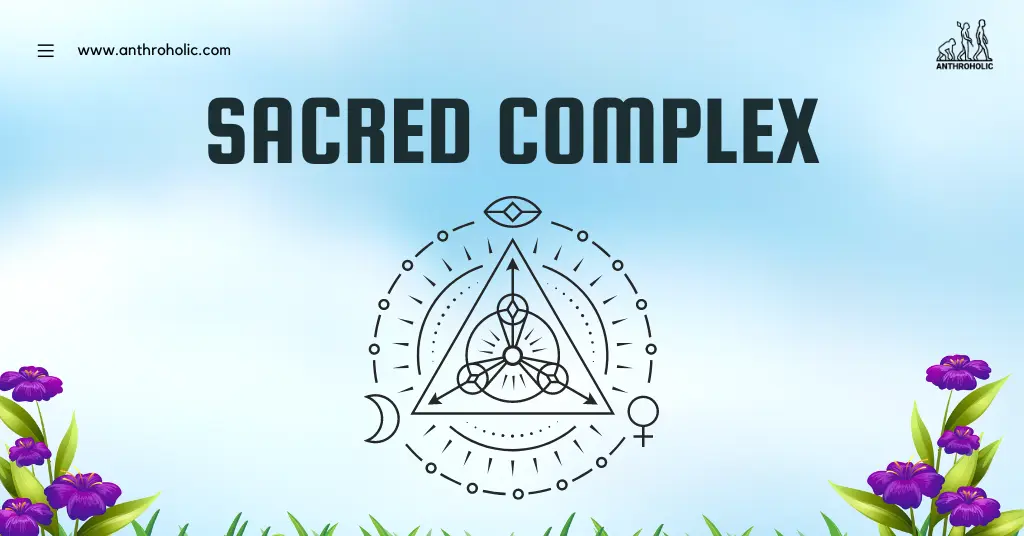AI Answer Evaluation Platform Live Now. Try Free Answer Evaluation Now
Sacred Complex
The concept of the Sacred Complex is a significant aspect of the Indian social system and plays a vital role in the lives of its people. Originating from the works of LP Vidyarthi, this anthropological framework provides a lens through which the intricate relationships between various components of the sacred in the Indian society can be understood [1].

Definition of Sacred Complex
Sacred Complex can be defined as the interconnection and interaction of sacred elements, including the sacred shrines, sacred specialists, and sacred performances within a society. It represents the unity and integrity of various socio-religious phenomena and their influence on people’s lives [2].
The Indian Sacred Complex
Sacred Shrines
In India, temples and other sacred places often serve as focal points for the community. They become the epicenters of cultural and religious activities, binding the community together.
Table 1: Prominent Sacred Shrines in India
| Shrine Name | Location | Deity |
|---|---|---|
| Kashi Vishwanath | Varanasi, UP | Lord Shiva |
| Jagannath Temple | Puri, Odisha | Lord Jagannath |
| Meenakshi Temple | Madurai, Tamil Nadu | Goddess Meenakshi |
Sacred Specialists
These individuals, often priests and spiritual leaders, play a crucial role in connecting people with the sacred. Their functions, roles, and significance vary across regions and communities in India.
Sacred Performances
From rituals to festivals, sacred performances are vital in conveying the socio-religious meanings and beliefs of the community. They reinforce the cultural norms and values within the society [3].
LP Vidyarthi and His Contributions
LP Vidyarthi, a prominent Indian anthropologist, introduced the concept of Sacred Complex. His work, particularly in the city of Gaya, Bihar, has been instrumental in understanding the interconnectedness of various sacred elements and their impact on the Indian society [4].
Vidyarthi’s Fieldwork
His fieldwork in Gaya was revolutionary and provided comprehensive insights into the ways sacred shrines, specialists, and performances interact and influence each other within the community.
Table 2: Key Concepts in Vidyarthi’s Sacred Complex Study
| Component | Description |
|---|---|
| Sacred Shrines | Temples and places of worship |
| Sacred Specialists | Priests, monks, and spiritual leaders |
| Sacred Performances | Rituals, festivals, and other religious activities |
Conclusion
The concept of Sacred Complex is not merely an abstract theory; it is a living entity that resonates within the cultural fabric of India. LP Vidyarthi’s work has opened doors to a deeper understanding of the intricate connections between various sacred elements, providing a multi-dimensional perspective of Indian society.
References
[1] Vidyarthi, L.P. (1961). The Sacred Complex in Hindu Gaya. Asia Publishing House. https://www.indianculture.gov.in/ebooks/sacred-complex-hindu-gaya
[2] Ghurye, G.S. (1966). Indian Sociology through Ghurye. Popular Prakashan. https://www.academia.edu/71075012/GS_Ghurye_Caste_in_India
[3] Béteille, A. (1986). The Idea of Natural Inequality and Other Essays. Oxford University Press. https://doi.org/10.1177/001946468402100407
[4] Vidyarthi, L.P., & Rai, B.K. (1976). The Tribal Culture of India. Concept Publishing Company. https://catalogue.nla.gov.au/catalog/855813




